|
Sunday:
June 13, 2004 | |
1701 GMT |
 |
'Flagship mission of our time' nears its destination
Seven years after launch on a four-planet gravitational bank shot covering more than 2 billion miles, NASA's $3.3 billion nuclear-powered Cassini probe - the most sophisticated robotic spacecraft ever built - has finally reached the solar system's most spectacular target: The ringed planet Saturn. This is our 8,600-word, four-part preview of the Cassini-Huygens mission:
 MISSION PREVIEW MISSION PREVIEW
 |  |
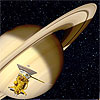
|
 |
Close-up views of Phoebe show moon's battered past
First images from the Cassini flyby of Phoebe reveal it to be a scarred, cratered outpost with a very old surface and a mysterious past, and a great deal of variation in surface brightness across its surface.
 FULL STORY FULL STORY
 |  |

|
 |
|
Saturday:
June 12, 2004 | |
1943 GMT |
 |
Cassini makes close observations of Phoebe
With its flyby of Phoebe on Friday, the Cassini spacecraft has completed the first encounter in its four-year tour of the Saturn system. "One down, 52 to go," the mission's chief navigator said Saturday from NASA's Jet Propulsion Laboratory.
 FULL STORY FULL STORY
 PHOEBE APPROACH PICTURES PHOEBE APPROACH PICTURES
 |  |

|
 |
Saturn's storm alley
This image from the Cassini spacecraft shows several dark storms confined to a region below 30 degrees south latitude in Saturn's atmosphere. This turbulent region has produced quite a few storms during Cassini's approach to Saturn, including some that have merged.
 FULL STORY FULL STORY
 |  |

|
 |
Galaxy formation theory no longer conflicts
Astrophysicists led by the University of Chicago's Andrey Kravtsov have resolved an embarrassing contradiction between a favored theory of how galaxies form and what astronomers see in their telescopes.
 FULL STORY FULL STORY
 |  |

|
 |
Date for upcoming ISS spacewalk in limbo
The Expedition 9 crew, commander Gennady Padalka and NASA ISS science officer Mike Fincke, spent their seventh week aboard the Station continuing to prepare for their first spacewalk, now under consideration to be conducted June 24.
 FULL STORY FULL STORY
 |  |
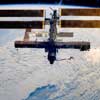
|
 |

Additional coverage for subscribers:
 VIDEO:
CREW PAYS TRIBUTE TO PRESIDENT REAGAN QT VIDEO:
CREW PAYS TRIBUTE TO PRESIDENT REAGAN QT
 SUBSCRIBE NOW SUBSCRIBE NOW

|
|
Friday:
June 11, 2004 | |
0526 GMT |
 |
Radio telescopes reveal youngest stellar corpse
Astronomers using a global combination of radio telescopes to study a stellar explosion some 30 million light-years from Earth have likely discovered either the youngest black hole or the youngest neutron star known in the Universe.
 FULL STORY FULL STORY
 |  |

|
 |
Space shuttle solid rocket motor test fired
NASA's space shuttle program successfully fired a full-scale solid rocket booster in Utah on Thursday to test more than 76 objectives, including a modification that slightly changes the shape of the propellant in a segment of the motor, increasing the propellant's strength.
 FULL STORY FULL STORY
 |  |

|
 |
Zenit booster puts Russian military satellite into space
Delayed numerous times by technical troubles over the past few months, a Zenit 2 rocket finally launched from Baikonur Cosmodrome early Thursday carrying a classified Russian military payload.
 FULL STORY FULL STORY
 |  |

|
 |
|
Thursday:
June 10, 2004 | |
0414 GMT |
 |
Mars rover Opportunity enters stadium-sized crater
The Mars Exploration Rover Opportunity dipped its wheels into Endurance Crater on Tuesday as controllers followed a cautious approach to ensure the robot doesn't become marooned inside the stadium-sized crater.
 FULL STORY FULL STORY
 |  |

|
 |

Additional coverage for subscribers:
 VIDEO:
OPPORTUNITY DRIVES INTO CRATER AND THEN BACKS OUT QT VIDEO:
OPPORTUNITY DRIVES INTO CRATER AND THEN BACKS OUT QT
 SUBSCRIBE NOW SUBSCRIBE NOW

|
Cassini to examine Saturn's mysterious 'black' moon
The science team is eager to study the data and images returned this week when the Cassini spacecraft makes the closest-ever flyby of Saturn's moon Phoebe. The information obtained from Friday's encounter will help scientists determine the icy moon's surface composition and properties.
 FULL STORY FULL STORY
 |  |

|
 |
Mars Express orbiter sees evidence of past flooding
The High Resolution Stereo Camera on Europe's Mars Express orbiter has captured new pictures of the martian region at the mouth of the Mangala Valles and Minio Vallis outflow channels. The small-scale chaotic terrain is characterised by isolated blocks of surface material which have been randomly arranged during the release of subsurface water and subsequent collapse of the surface.
 FULL STORY FULL STORY
 |  |

|
 |
|
Wednesday:
June 9, 2004 | |
0435 GMT |
 |
Opportunity heads into crater; Spirit's water clue
NASA's Mars Opportunity rover began its latest adventure Tuesday inside the martian crater informally called Endurance. Opportunity was to roll in with all six wheels, then back out to the rim to check traction by looking at its own track marks.
 FULL STORY FULL STORY
 |  |

|
 |

Additional coverage for subscribers:
 VIDEO:
OPPORTUNITY'S DRIVE PATH AND PLANS DESCRIBED QT VIDEO:
OPPORTUNITY'S DRIVE PATH AND PLANS DESCRIBED QT
 VIDEO:
EARTH TESTING OF ROVER MOCK-UP FOR CRATER DRIVE QT VIDEO:
EARTH TESTING OF ROVER MOCK-UP FOR CRATER DRIVE QT
 VIDEO:
LEAD SCIENTIST EXPLAINS OBJECTIVES INSIDE CRATER QT VIDEO:
LEAD SCIENTIST EXPLAINS OBJECTIVES INSIDE CRATER QT
 VIDEO:
OPPORTUNITY'S TARGET ROCK SHOWN WITH NARRATION QT VIDEO:
OPPORTUNITY'S TARGET ROCK SHOWN WITH NARRATION QT
 VIDEO:
NEW COLUMBIA HILLS PANORAMA FROM SPIRIT ROVER QT VIDEO:
NEW COLUMBIA HILLS PANORAMA FROM SPIRIT ROVER QT
 VIDEO:
WATCH TUESDAY'S MARS ROVER NEWS CONFERENCE QT VIDEO:
WATCH TUESDAY'S MARS ROVER NEWS CONFERENCE QT
 SUBSCRIBE NOW SUBSCRIBE NOW

|
GPS satellite targeted for Sunday launch from Florida
A Boeing Delta 2 rocket is aiming for a Sunday evening liftoff from Cape Canaveral with the next replacement Global Positioning System satellite, if Air Force officials become satisfied with an examination of wiring used on the booster.
 MISSION STATUS CENTER MISSION STATUS CENTER
 LAUNCH TIMELINE LAUNCH TIMELINE
 GROUND TRACK MAP GROUND TRACK MAP
 DELTA LAUNCH ARCHIVE DELTA LAUNCH ARCHIVE
 |  |

|
 |
Rocket valve swap delays launch of NASA craft
Engineers must remove a leaky valve on the Boeing Delta 2 rocket before NASA's Aura environmental satellite can be launched from Vandenberg Air Force Base in California, delaying the mission into early July.
 MISSION STATUS CENTER MISSION STATUS CENTER
 |  |
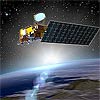
|
 |
NEWSWIRE Links to news across the internet
|
 |
Thousands watch Venus pass across sun -- (AP) In this old center of stargazing, as in much of the world, thousands watched a rare heavenly show Tuesday: the black dot of Venus inching across the blazing face of the sun.

Ex-NASA chief Richard Truly retiring -- (AP) Richard Truly, a former astronaut and NASA administrator who has headed the National Renewable Energy Laboratory since 1997, said Tuesday he will retire in November.
|
 |
|
Tuesday:
June 8, 2004 | |
0356 GMT |
 |
New theory for first stars
The very first stars that formed early in the history of the universe were smaller than the massive giants implied by the results of a NASA research satellite, but still larger than the typical stars found in our galaxy today, according to a research team led by the University of Chicago's Jason Tumlinson.
 FULL STORY FULL STORY
 |  |
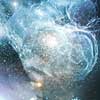
|
 |
FUSE pierces the Veil
The Veil Nebula, a delicate network of glowing gaseous filaments in the northern constellation of Cygnus the Swan, has long been a favorite of both amateur and professional astronomers. Part of a much larger nebula known as the Cygnus Loop, the Veil is comprised of the leftovers of a star that exploded between 5,000 and 8,000 years ago.
 FULL STORY FULL STORY
 |  |
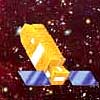
|
 |
Origin of enigmatic galactic center filaments revealed
Twenty years ago, astronomers discovered a number of enigmatic radio-emitting filaments concentrated near the center of the Milky Way Galaxy. These features initially defied explanation, but a new study of radio images of the Galactic center may point to their possible source.
 FULL STORY FULL STORY
 |  |

|
 |
|
Monday:
June 7, 2004 | |
0457 GMT |
 |
Hubble refines distance to Pleiades star cluster
Astronomers using NASA's Hubble Space Telescope have helped settle a mystery that has puzzled scientists concerning the exact distance to the famous nearby star cluster known as the Pleiades, or the Seven Sisters.
 FULL STORY FULL STORY
 |  |

|
 |
Faintest survey of distant galaxies taken by Hubble
Researchers have measured accurate distances to several faint, red galaxies seen in the Hubble Ultra Deep Field, confirming that three fourths are among the most distant galaxies yet studied.
 FULL STORY FULL STORY
 |  |

|
 |



